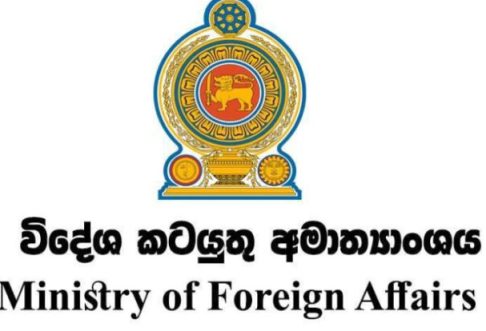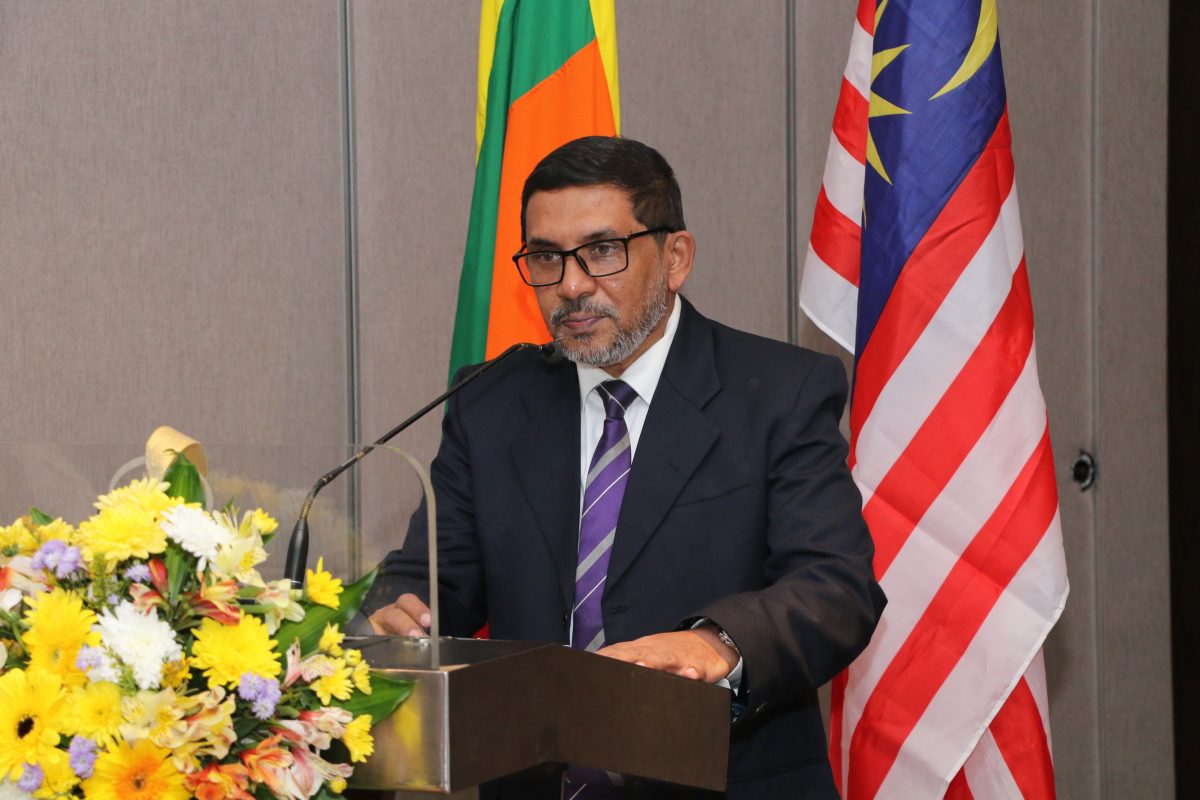I would like to claim a historic status for my article Neo-Fascism and SL Muslims which appeared in the Lakbima News of December 28, 2008. This claim is not based on any immodest pretensions about the quality of that article. What I have in mind is that as far as my knowledge goes it was the first article published in Sri Lanka in which a serious attempt was made to characterize a Sri Lankan political party as neo-Fascist. Before that the term “Fascist” was used as not much more than a term of abuse, and not as a serious categorization of anything going on in the politics of Sri Lanka.
Now the term is evidently coming into vogue as a consequence of the Lasantha Wickrematunge assassination. In an article in the Lakbima News of January 18 Kumar David referred – quite accurately I must say – to a “proto-fascist surge” in Sri Lanka and concluded by calling for a broad anti-fascist alliance. The next Sunday’s issue of the same paper had an article by Dr Vickremabahu Karunaratne under the heading “Anti-fascists close ranks to defeat authoritarianism”, and a further article by Kumar David in which he addressed the question of “what is fascism”, a question which he thinks is “crucial”. I agree with him and shall try to provide my own answer to that question.
But first I must make some observations on the problems that arise in trying to define terms such as “fascism” and “democracy”. No definition of such terms can ever be final as they can never get unanimous acceptance. The sensible thing to do – instead of attempting final definitions – is to set out what one has in mind in using a term such as “fascism” and leave it to the reader to judge whether or not it fits in with the commonly accepted usage of such terms. We must bear in mind furthermore that such terms refer not to things but to processes, and therefore can be expected to keep on changing over time. Democracy as it is understood today is a very different thing from what it was understood to be in the nineteenth century. Likewise the present-day understanding of what fascism is about has changed from what it used to be in the inter-war period, so that it is now commonplace to use the term “neo-fascism”.
I will now provide brief illustrations of the kind of difficulties that I have in mind. It used to be supposed that before World War II there were four fascist dictatorships in Europe – those of Mussolini’s Italy, Hitler’s Germany, Franco’s Spain, and Salazar’s Portugal. It is now generally accepted that what prevailed in Spain and Portugal were traditional authoritarian regimes, not fascist dictatorships. This follows from an understanding of fascism as a response to the pressures of modernity by striking out along a new revolutionary path, whereas the dictatorships of Franco and Salazar had at their core an attempt to preserve the past. Clearly the understanding of fascism today is not what it was in the inter-war period, and what it was during several decades thereafter.
It is generally supposed that racism is at the very core of fascism. But it was no part of Mussolini’s program when he inaugurated fascism in 1919, though he incorporated it later under the influence of Hitler. I came across a very surprising detail in Peter Padfield’s political biography of Himmler – one of the top Nazis under Hitler – which suggests that in the minds of the Nazi leaders themselves there was no necessary nexus between fascism and racism. When Mussolini was overthrown in 1945 Himmler declared that it showed the failure of fascism, not the failure of Nazism, of what Hitler and his regime stood for, which was a new world order based on racism. (I myself believe that there is something like a nexus between fascism and racism – a point I will deal with later).
If fascist leaders were so confused about fascism during the hey-day of European fascism, can we hope today to attain clarity on that subject? I believe we can. In the inter-war period fascism was still something new, something still inchoate, without its theoretical foundations being properly worked out. The situation today is vastly different. In the ‘sixties there was a major breakthrough in the study of fascism with the publication of Ernst Nolte’s Three Faces of Fascism, a book which convinced me that fascism was still alive and vigorously kicking, and even that although Hitler had lost the Second World War he had won the Third World. Over the last three decades or so there has been a spate of writings on fascism with the growth of the extreme right in Europe – which should more properly be called neo-fascism – and the emergence of sinister leaders like Le Pen in France and the late Jorg Haider in Austria. As a consequence, we can now have a better understanding of the forces that led to fascism in the inter-war period and can now lead to neo-fascism in countries such as Sri Lanka at present.
I believe that it is now possible to identify the core factors behind fascism and neo-fascism. The core factors may be just two in number, may be just three, not many in any case, and could be seen as constituting a minimal definition. But that definition hardly merits the name because it will not suffice to account for any form of fascism that is actually in practice. But it helps towards clarity of thought about fascism to bear in mind the core factors without which there can be no fascism
Before setting out those core factors I will now set out the factors that led me to characterize the JHU as a neo-fascist party in my article Neo-fascism and SL Muslims (Lakbima News of December 28). The first factor was the irrationality displayed by the JHU in its attitudes towards the Muslims. It is disputed that irrationalism is a characteristic of fascism on the ground that it has attracted thinkers of the caliber of Heidegger and Carl Schmitt in Germany and Gentile in Italy, in addition to several writers who have classic status in the West. I will not argue the point except to say that irrationalism has been a trend in Western thought since the nineteenth century, and fascism has to be understood as a reaction against the Enlightenment ideology which had rationalism as one of its cardinal values.
I identified two other major characteristics of the JHU as being clearly fascist, the first of which is its brand of nationalism. There are broadly two different kinds of nationalism. One, arising out of the French Revolution, privileges the individual who becomes the equal of every other individual by virtue of common citizenship in a nation-state. The other privileges the major ethnic group which is supposed to have a special “organic” relationship with the soil, a nationalism of blood and soil which is not available to ethnic groups that are not indigenous to the territory of the nation-state. It is this second kind of nationalism – a necessary condition for fascism – to which the JHU is deeply devoted.
The other major JHU characteristic that I identified as fascist was racism. The second kind of nationalism, privileging as it does the majority ethnic group, can be expected to easily slide into racism. Not surprisingly the JHU is supposed to regard our ethnic minorities including the Tamils and the Muslims as “visitors”, the beneficiaries of the Buddhist compassion exercised by Sinhala monarchs of yore who allowed them to settle in this country, for which those minorities should be grateful instead of making “undue demands”. It is a characteristic of the extreme right in Europe to demand the repatriation of immigrants of recent decades, but they never describe as “visitors” the minorities who have been in their countries for centuries. The German Nazis, on the other hand, regarded Jews and Gypsies as akin to visitors, as aliens, not properly German, even though they had been in Germany for centuries.
I come now to the core factors of fascism to which I referred earlier with the following quotation from Roger Eatwell’s book Fascism (1995): “Fascist ideology is, therefore, a form of thought which preaches the need for social rebirth in order to forge a holistic-national radical Third Way.” The two core factors are to be found in the phrase “holistic-national radical Third Way”. The second factor – a radical Third Way – arose in Europe out of a fear of Communism and a deep dissatisfaction with capitalism which drove people to look for a new socio-economic ordering of society. Something comparable has been going on in the political parties of many third world countries, including Sri Lanka.
More important for my purpose in this article is the core first factor implied in the phrase “holistic-national”. It really refers to the second kind of nationalism, the blood and soil variety, to which I referred earlier. It can lead by easy transition to several recognized characteristics of fascism. As I pointed out earlier it can lead to racism, and also to primacy being given to the society over the individual, and thereafter to primacy being given to the State over society. Behind it all is a desperate need for unity, because fascism seems to arise basically out of the rootlessness and atomization of society that goes with modernity. And finally it can lead to dictatorship, since democracy with its contending political parties can be seen as essentially divisive. It is not accidental that a JHU notable recently spoke out in favour of dictatorship.
Post Disclaimer | Support Us
Support Us
The sailanmuslim.com web site entirely supported by individual donors and well wishers. If you regularly visit this site and wish to show your appreciation, or if you wish to see further development of sailanmuslim.com, please donate us
IMPORTANT : All content hosted on sailanmuslim.com is solely for non-commercial purposes and with the permission of original copyright holders. Any other use of the hosted content, such as for financial gain, requires express approval from the copyright owners.
 Sri lanka Muslims Web Portal Sri Lanka Muslims News Center
Sri lanka Muslims Web Portal Sri Lanka Muslims News Center



